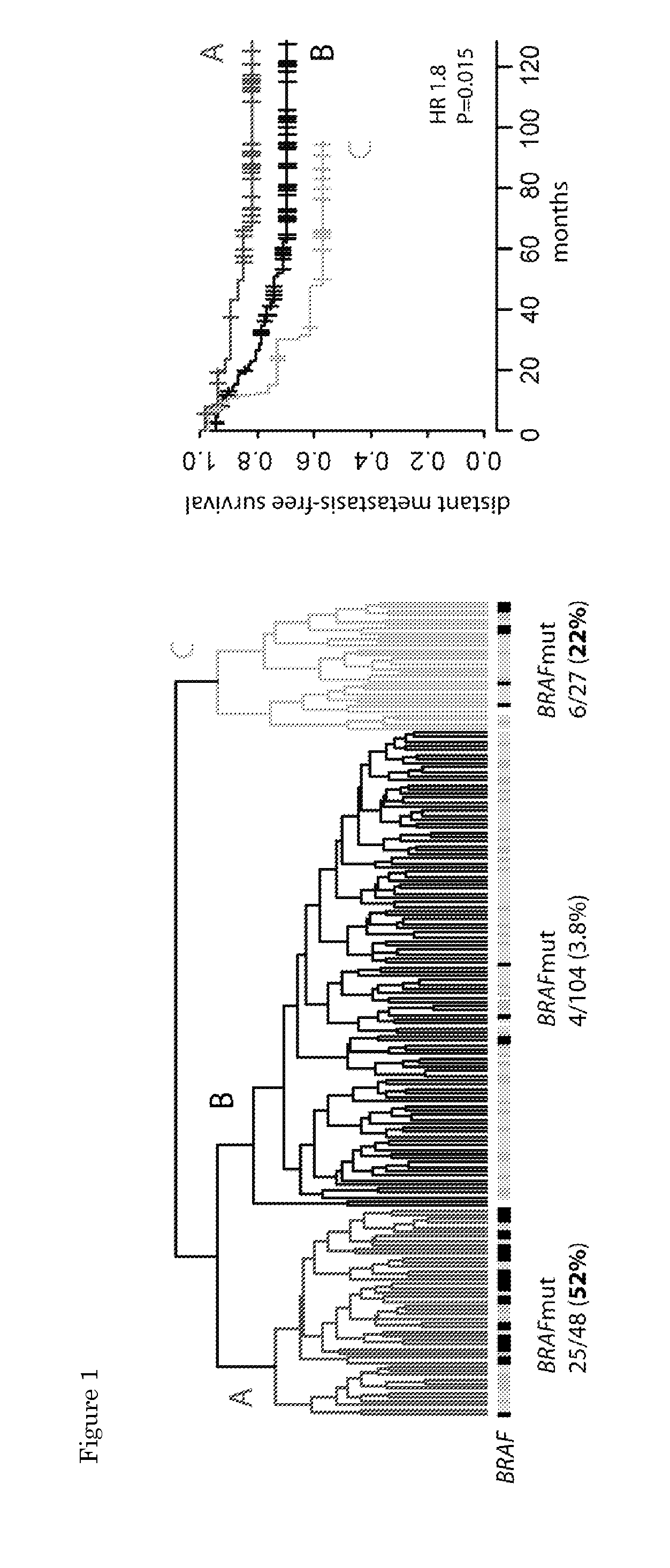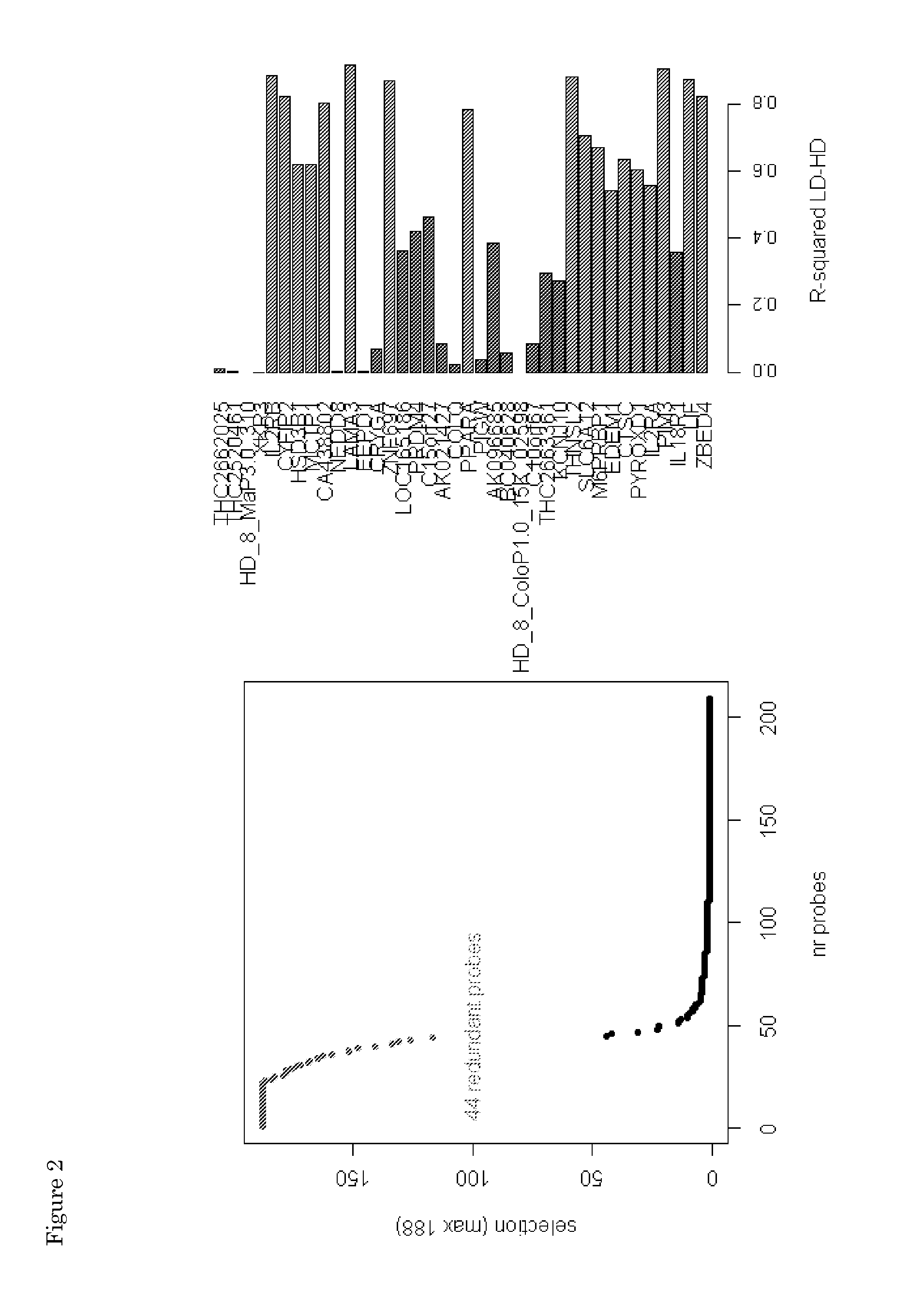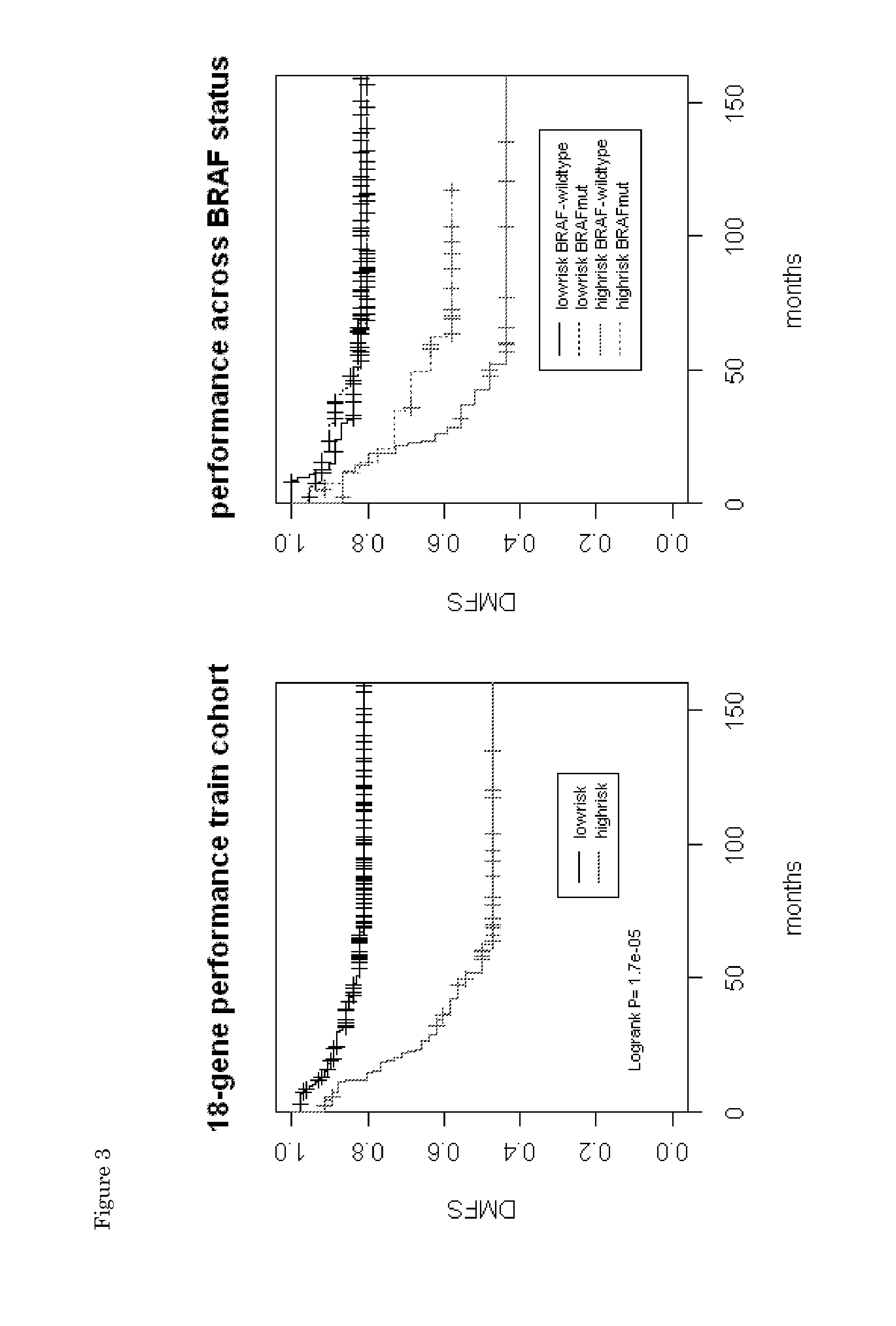Methods and means for typing a sample comprising colorectal cancer cells
- Summary
- Abstract
- Description
- Claims
- Application Information
AI Technical Summary
Benefits of technology
Problems solved by technology
Method used
Image
Examples
example 1
Generation of Classifier
Patients
[0076]Clinical and pathological information documented at the time of surgery included stage, grade, size and location of tumors. Additionally, the number of lymph nodes assessed for nodal involvement was described in 95% of cases. Tumors were staged according to the TMN staging system. All tissue samples were collected from patients with appropriate informed consent. The study was carried out in accordance with the ethical standards of the Helsinki Declaration and was approved by the Medical Ethical Board of the participating medical centers and hospitals. Patients were monitored for survival and recurrence for up to 270 months.
[0077]Mutation analysis was performed on all samples, including training set and validation set, using a sequencing approach. B-Raf mutations were analyzed in exon 15 after amplification of cDNA to detect a V600E activating mutation. Primers used were (primer 1) 5′-tgatcaaacttatagatattgcacga (SEQ ID NO: 210)...
example 2
Classifier Training
[0087]The 18 identified genes were used to construct a colon prognosis classifier that is analogous to a previous defined, breast cancer prognosis signature (WO2002103320; which is hereby incorporated by reference). For each sample, a low-risk score and a high-risk score was calculated based on the 18-gene expression pattern in that sample. Both scores were combined into a final index. The optimal threshold for the classifier index score was determined in such a way to reach optimal sensitivity and specificity. If a sample's index exceeded a threshold (−0.05) it was considered as a high-risk samples, and visa versa. Survival analysis of the profile outcome on the training cohort (using a Leave One Out cross validation procedure) indicated a hazard ratio (HR) of 3.41 (P=1.4e-5) with a 5-year DMFS rate of 82% (95CI, 76-89%) for low-risk samples and 50% (95% CI, 38-66%) of high-risk samples. Disease-free survival is relative low for both high- and low-risk classes, l...
example 3
Classifier Evaluation
[0088]The 18-gene profile was validated on an independent cohort of 178 stage II and III colon samples. The profile classified 61% of the validation samples as low-risk and 39% as high-risk. The low- and high-risk samples showed a significant difference in DMFS with a HR of 3.19 (P=8.5e-4). Five-year DMFS rates were 89% (95CI, 93-95%) for low-risk and 62% (95CI, 50-77%) for high-risk samples.
[0089]In the sub-analysis of stage II patients only, the 18-gene profile had an HR of 3.61 (0=0.01)—Five-year DMFS rates were 91% (95CI, 84-98%) for low-risk and 71.8% (95CI, 57-87%) for high-risk patients. In the sub-analysis of stage III patients only, the 18-gene profile had an of 2.72 (0=0.045)—Five-year DMFS rates were 84.3% (95CI, 71.4-97.2%) for low-risk and 49.4% (95CI, 27.4-71.3%) for high-risk patients.
[0090]Next, we investigated whether the 18-gene profile showed prognostic power for samples from untreated patients only, or also for patients treated with chemother...
PUM
| Property | Measurement | Unit |
|---|---|---|
| Time | aaaaa | aaaaa |
| Ratio | aaaaa | aaaaa |
| Level | aaaaa | aaaaa |
Abstract
Description
Claims
Application Information
 Login to View More
Login to View More - R&D
- Intellectual Property
- Life Sciences
- Materials
- Tech Scout
- Unparalleled Data Quality
- Higher Quality Content
- 60% Fewer Hallucinations
Browse by: Latest US Patents, China's latest patents, Technical Efficacy Thesaurus, Application Domain, Technology Topic, Popular Technical Reports.
© 2025 PatSnap. All rights reserved.Legal|Privacy policy|Modern Slavery Act Transparency Statement|Sitemap|About US| Contact US: help@patsnap.com



